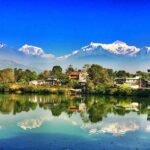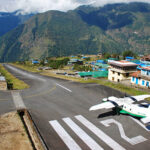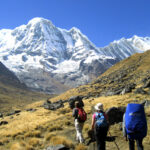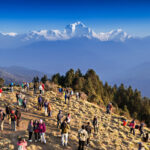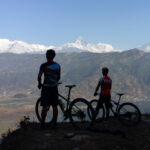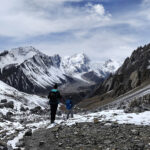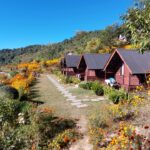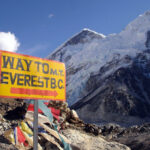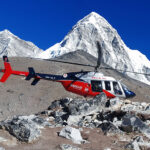
Lukla Airport – The Gateway to Everest Base Camp
Lukla Airport, officially known as Tenzing-Hillary Airport (IATA: LUA), is the primary gateway for trekkers heading to Everest Base Camp and the Khumbu region. Perched at an elevation of 2,860 meters (9,383 feet), this airport is renowned for its dramatic location, short runway, and breathtaking Himalayan views. Despite its reputation as one of the world’s most challenging airports, Lukla remains a vital hub for adventurers seeking to explore the Everest region.
Flight Operations: Kathmandu to Lukla via Ramechhap (2025 Update)
As of March 25, 2025, the Civil Aviation Authority of Nepal (CAAN) has mandated that all flights to Lukla operate from Ramechhap’s Manthali Airport (RCH) instead of Kathmandu’s Tribhuvan International Airport (KTM). This change aims to alleviate congestion at Kathmandu and ensure smoother flight operations to Lukla.
Key Details:
-
Drive from Kathmandu to Ramechhap: Approximately 4–5 hours.
-
Flight Duration from Ramechhap to Lukla: Around 15–20 minutes .
-
Flight Schedule: Early morning departures are common to take advantage of favorable weather conditions.
Flight Costs:
-
Foreign Nationals: USD 207 (nett) to USD 214 (gross) per one-way flight.
-
SAARC Nationals: Approximately INR 17,500.
-
Nepali Citizens: Around NPR 7,000.
Airport Overview: Tenzing-Hillary Airport
Location: Lukla, Solukhumbu District, Nepal.
Elevation: 2,860 meters (9,383 feet).
Runway: 527 meters (1,729 feet) long with a 12% gradient, sloping uphill to aid in landing and takeoff.
History: Constructed in 1964 under the guidance of Sir Edmund Hillary, the airport was named in honor of Hillary and Tenzing Norgay in 2008.
Safety Measures: Pilots must have completed at least 100 short takeoff and landing (STOL) flights, with a minimum of one year of STOL experience in Nepal, and at least ten flights into Lukla with a certified instructor .
Recent Upgrades: Installation of a new baggage screening X-ray machine to enhance security and streamline check-ins .
Weather and Best Time to Visit
Lukla’s mountainous location results in rapidly changing weather conditions, which can impact flight schedules.
Optimal Trekking Seasons:
-
Spring (March–May): Mild temperatures with blooming rhododendrons.
-
Autumn (September–November): Clear skies and stable weather conditions.
Seasons to Avoid:
-
Monsoon (June–August): Heavy rainfall can lead to flight cancellations and challenging trekking conditions.
-
Winter (December–February): Cold temperatures and potential snowfall may disrupt travel plans.
Travel Tip: Incorporate buffer days into your itinerary to accommodate potential flight delays due to unpredictable weather.
Activities in Lukla
While Lukla is primarily a transit point for trekkers, there are several activities to enjoy:
-
Explore Local Villages: Immerse yourself in Sherpa culture by visiting nearby communities.
-
Visit Kemgon Gompa: A local monastery featuring intricate paintings, ideal for photography enthusiasts.
-
Observe Airport Operations: Watch aircraft navigate the challenging runway—a thrilling experience for aviation enthusiasts.
-
Support Local Institutions: Consider visiting the local school or hospital to offer donations or interact with residents.
-
Culinary Delights: Savor traditional dishes like Sherpa stew; opt for vegetarian options as meat is flown in and may not always be fresh.
Final Tips for Travelers
-
Acclimatization: Spend a day in Lukla before commencing your trek to adjust to the altitude.
-
Stay Informed: Keep abreast of flight schedules and weather forecasts.
-
Pack Accordingly: Prepare for varying weather conditions and adhere to baggage weight restrictions for flights.
Lukla Airport, with its unique challenges and stunning surroundings, offers an unforgettable start to your Everest adventure. By planning ahead and staying informed, you can ensure a safe and memorable journey into the heart of the Himalayas.

